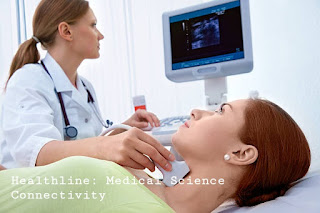 |
| Blood taking to test anemia |
About Anemia :
Anemia is an underlying health condition in which the haemoglobin concentration in blood is lower than normal values. Haemoglobin concentration for men 13 g/100 ml and for 12 g/ 100 ml is considered as normal value of haemoglobin (Hb). World Health Organization defines Anemia as a reduction of the haemoglobin concentration to less than 130 g/ litre in man or less than 120 g/ litre in women.
Main function of the haemoglobin to bind oxygen molecule to red blood cells to transport oxygen from lungs to all body's tissues and carbondioxide from tissues to the lungs. If the blood has too few or abnormal red blood cells or not enough haemoglobin, there will be a decreased capacity of the blood to carry oxygen to the body’s tissues. If this situation persists for long , anemia occurs.
Prevalence of anemia
Anemia is a serious global public health problem. It is a very common problem in low and middle income countries. A data collected in 2013 showed that 27 percent of the world populations or 1.9 billion people are affected by anemia and 90 percent of them were from developing countries.
It particularly affects young children and pregnant women. World Health Organization has published a data that 42 percent of children less than 5 years of age and 40 percent of pregnant women worldwide are anaemic. This figure shows how anemia is affecting children and pregnant women worldwide. It is also estimated one third of all women of reproductive age are anaemic. Thus prevalence of anemia remains high globally particularly low income families or communities. Anemia is also an indicator of both poor nutrition and poor health. It has impacts not only on health but has impacts also on social and economic status of family.
What are the symptoms of anemia?
The common symptoms of anemia are fatigue, weakness, dizziness and shortness of breath, pale skin and lips.
What are the causes of anemia?
Although most common causes of anemia is the nutritional deficiencies, particularly iron deficiency, anemia occurs also due deficiencies of folate, vitamin B12 and vitamin A. Haemoglobinopathies and Infectious diseases like malaria, HIV, tuberculosis and parasitic infections also cause anemia.
It should be noted that defective production of red blood cells (erythrocytes) or an increased rate of loss of RBC, either by bleeding or premature destruction of cell (haemolysis) can cause anemia.
Besides above mentioned causes, the reduced erythropoietin production typically seen in chronic kidney disease can cause anemia.
Primary diseases of the bone marrow also develop anemic state of the body.
But it is clear that nutritional anemia is relatively common in most populations at certain periods during development and in life.
Preschool children and women of reproductive age are particularly affected by anemia and more 60 percent of anemia is caused by iron deficiency.
How does anemia affect body ?
As it develops due to the reduction of level of oxygen carrying vehicles, haemoglobin in the blood , anemia affects all most all parts of body including vital organs. As anemia reduces tissue oxygenation, it is associated with widespread organ dysfunction. It shows varied clinical picture. The degree of organ dysfunction depends on whether anemia is of rapid or insidious onset.
In mild anemia there may be no symptoms or simply increased fatigue and slight pallor. As anemia becomes more marked, the symptoms and signs gradually appear.
As anemia get severe cardiorespiratory symptoms and signs like exertional dyspnoea, tachycardia, palpitations, angina, night cramps, increased arterial pulsation, capillary pulsation, a variety of cardiac bruits, reversible cardiac enlargement may occur.
Anemia also affects neuromuscular parts. Impacts on neuromuscular parts reflected by headache, vertigo, light headedness, faintness, tinnitus, roaring in the ears, cramps, increased cold sensitivity, and haemorrhages in the retina.
How does Anemia cause heart failure?
In mild anemia oxygen consumption is unchanged by shifting oxygen dissociation curve. When the haemoglobin concentration level falls below 7-8 g /100 ml , there is an increase in cardiac output, both at rest and after exercise
As oxygen supply to central nervous system, cardiac muscle and other muscle vastly cut off , hypoxia develops . Hypoxia increases the stroke rate and hyperkinetic circulation develops, characterized by tachycardia, arterial and capillary pulsation, a wide pulse pressure, and flow murmurs. The circulation time is shortened, left ventricular stroke is increased, and coronary flow is increased in proportion to the increased cardiac output. The normal myocardium ( cardiac muscle) may tolerate all these hyperactivities but patients with coronary artery disease or those with extreme anemia may impaire oxygenation oxygenation of the myocardium. In such conditions, cardiomegaly, pulmonary oedema, ascites, and peripheral oedema may occur. And finally a state of high output cardiac failure is established.
How does Anemia affect pregnancy?
Development of anemia during pregnancy severely affects both mother and baby. It may affect proper growth of baby. If mother has anemia in first three months of pregnancy, deformed embryo may form.
Anemia during pregnancy makes mother weak and she feels tired dizziness, difficult in breathing, rapid heartbeat.
What is sickle cell anemia?
Sickle cell anemia is a type of anemia which results due to sickle cell haemoglobin (HbS). Sickle cell haemoglobin is not able to carry oxygen as other normal haemoglobin. The red blood cells with sickle haemoglobin looks like rigid sickle shaped under certain conditions.
Sickle cell haemoglobin results from single based mutation of adenine to thymine.
Pathogesis of sickle cell anemia occurs in this way:
Deoxygenated sickle cell haemoglobin molecules are insoluble and polimerize. The flexibility of the cell is decreased and they become rigid and take up their characteristic sickle appearance. Initially process of sickling reversible, but repeated sickling, the cells eventually lose their membrane flexibility and become irreversibly sickled. These irreversibly sickled cells are dehydrated and dense and will not return to normal when oxygenated .
Sickling can produce a shortened red cell impaired passage of cells through the microcirculation. These rigid sickled cells causes obstruction of small vessels and tissue infarction. Sickling is precipitated by infection dehydration, cold, acidosis or hypoxia.
Sickle cell anemia is common in Africa, India, Nepal, the Middle East, and Southern Europe.
What is aplastic anemia?
Aplastic anemia occurs due to bone marrow failure. A reduction in the number of pluripotential stem cells causes aplastic anemia.
Aplastic anemia is defined as pancytopenia with hypocellularity(aplasia) of the bone marrow. Aplastic anemia causes a deficiency of all blood cell types: red blood cells, white blood cells and platelets.
 |
| Anemia |





















